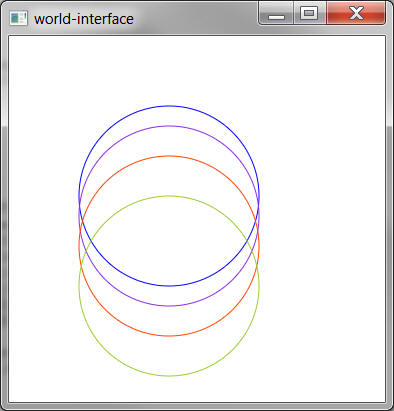package javatemplate1;
import java.io.InputStream;
import java.io.OutputStream;
import javafx.application.Application;
import javafx.scene.Group;//
import javafx.scene.Scene;
import javafx.scene.control.Button;
import javafx.scene.control.Label;
import javafx.scene.layout.StackPane;
import javafx.scene.paint.Color;
import javafx.scene.shape.Circle;
import javafx.scene.shape.Rectangle;
import javafx.stage.Stage;
public class JavaTemplate1 extends Application implements Note1{
// example of extends vs Interface and javafx
@Override
public void start(Stage primaryStage) {
// use Group or Pane
Circle circle1 = new Circle(100,100,90);
Circle circle2 = new Circle(100,100,90);
Circle circle3 = new Circle(100,100,90);
Circle circle4 = new Circle(100,100,90);
circle1.setStroke(Color.BLUE);circle1.setFill(null);
circle2.setStroke(Color.BLUEVIOLET);circle2.setFill(null);
circle3.setStroke(Color.ORANGERED);circle3.setFill(null);
circle4.setStroke(Color.YELLOWGREEN);circle4.setFill(null);
circle1.setLayoutY(60);circle1.setLayoutX(60);
circle2.setLayoutY(80);circle2.setLayoutX(60);
circle3.setLayoutY(110);circle3.setLayoutX(60);
circle4.setLayoutY(150);circle4.setLayoutX(60);
Group root = new Group();
root.getChildren().addAll( circle1,circle2,circle3, circle4);
Scene scene = new Scene(root,300,200,Color.WHITE);
primaryStage.setTitle(proc1);
primaryStage.setScene(scene);
primaryStage.show();
}
public static void main(String[] args) {
System.out.println("main block executing");
// Launching Application where Satge equals to window
//scene will contain children nodes using a container class
// like Group or Pane Class
launch(args);
}
}
